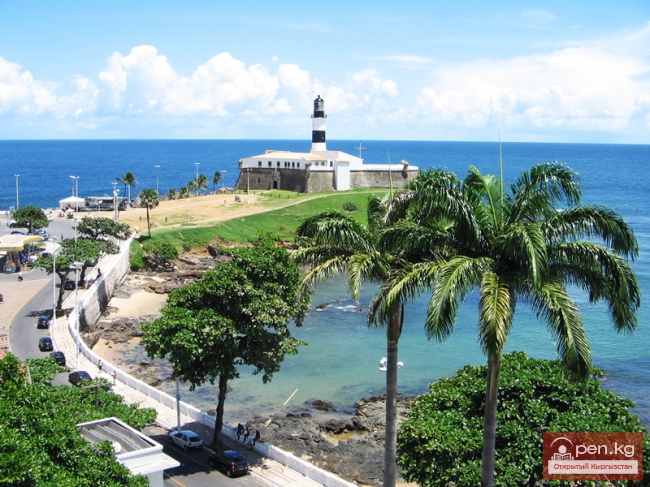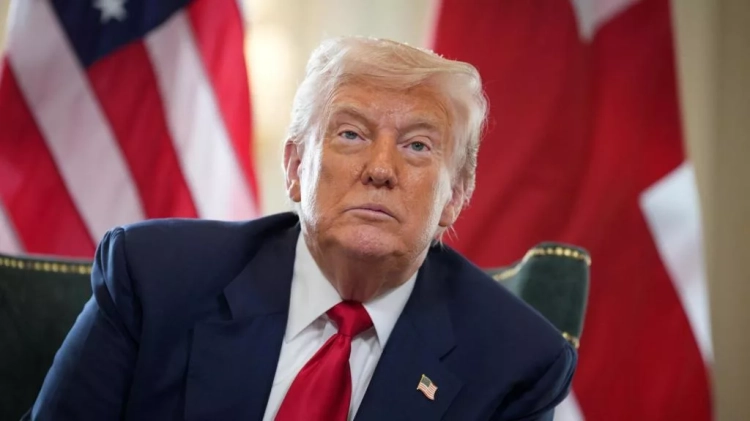PUERTO RICO. Commonwealth of Puerto Rico
A territory of the USA, located on the island of Puerto Rico, as well as on the islands of Vieques, Culebra, Mona, and others (in the Greater Antilles archipelago), situated between the continents of North and South America, washed by the waters of the Atlantic Ocean to the north and the Caribbean Sea to the south. To the west, Puerto Rico is separated from the island of Haiti by the Mona Passage.
Area - 9,100 km². The administrative center is San Juan (433,000, 2004), largest cities: Bayamón, Ponce. Population - approximately 3.9 million (2005), Puerto Ricans; whites (most of whom are Spanish-speaking) - 80.5%, blacks - 8%. The total number of Puerto Ricans living in the USA reaches approximately 2.7 million (mainly in New York). Official languages - Spanish and English. The dominant religion is Catholicism (about 85% of all believers). Currency - US dollar.
National holiday - July 4 - Independence Day of the USA.
Puerto Rico has (since 1952) the status of a "freely associated" state with the USA, with self-governing rights. The USA retains control over foreign policy, defense, etc. The constitution, which came into effect on July 25, 1952, is in force. Puerto Rico is represented in the House of Representatives of the US Congress by a resident commissioner (with the right of legislative initiative but without the right to vote). Legislative power within the autonomy of Puerto Rico is exercised by the Legislative Assembly, consisting of a Senate (29 members) and a House of Representatives (51 deputies), elected by direct vote for a term of 4 years (the last elections were in November 2004). The executive power is exercised by a governor, elected by direct vote for 4 years. The governor (since January 2005 - A. Acevedo-Vila, elected in November 2004) is the commander-in-chief of the armed militia and heads the Advisory Council, which includes 15 ministers appointed by him.
Main political parties: The Popular Democratic Party (PDP) - founded in 1939, advocates for the preservation and strengthening of the existing status of Puerto Rico (9 seats in the Senate and 18 in the House of Representatives). Leader - A. Acevedo-Vila. The Statehood Republican Party (SRP) - founded in 1898. In 1903, it joined the Republican Party of the USA, becoming its regional organization. Advocates for Puerto Rico's transformation into a US state. Leader - T. Ferré. The New Progressive Party (NPP) - founded in 1967 as a result of a split from the Statehood Republican Party. Advocates for Puerto Rico's admission to the USA as a state (17 seats in the Senate and 32 in the House of Representatives). Leader - P. Rosselló. The Puerto Rican Independence Party (PIP) - began to be formed in 1934 and was finally established in 1946. Its goal is to fight for independence through peaceful constitutional means. Chairman - R. Barrios Martinez (one seat in each chamber).
When on November 19, 1493, the expedition of Christopher Columbus reached the island of Puerto Rico, it was inhabited by indigenous people belonging to Arawak and Carib tribes. The conquest of the island for the Spanish monarchy began in 1508. In 1515, sugarcane was introduced here, which became the main agricultural crop in coastal areas. To work on sugarcane plantations, black slaves were imported starting in 1518 (slavery was abolished in 1873). By the end of the 16th century, the indigenous population of the island was almost completely exterminated. As a result of the Spanish-American War of 1898, Puerto Rico was occupied by American troops. According to the Paris Peace Treaty, the island was ceded to the USA. In the early 20th century, American capital flowed into Puerto Rico's economy, taking leading positions in sugar production. In the 1930s, demands for political independence for Puerto Rico intensified. In 1948, the USA was forced to grant the island the right to elect its governor. In the fall of 1950, a rebellion by supporters of Puerto Rican independence broke out. In 1967, a plebiscite was held on the question of determining the country's status: 60.5% of those who voted supported maintaining the existing situation, 38.9% for joining the USA as a state. In a plebiscite in 1993, the majority of the population again expressed support for maintaining the status of a "freely associated" state. In December 1998, a new plebiscite was held. According to the results of the vote, which is not binding, the majority (50.2%) of the population expressed support for maintaining the existing status of the country. The idea of Puerto Rico joining the USA as the 51st state was supported by 46.5% of participants.
On the territory of Puerto Rico, there are US military bases (the largest being Roosevelt Roads and Santiago).
The Puerto Rican economy is one of the most dynamically developing among the Caribbean countries.
American companies hold a dominant position in the economy. To attract foreign capital, tax incentives and other levers are widely used. In 2004, the country's GDP approached $69 billion. The share of agriculture in GDP is 1%, industry - 45%, trade and services - 54%. The economically active population in 2000 was 1.3 million (3% employed in agriculture, 20% in industry, 77% in services).
Industry is primarily represented by the oil refining and chemical sectors (over 40% of export value - chemical products). The oil refining industry operates on imported oil. About 60% of imported oil is used domestically, the rest is processed and exported, mainly to the USA.
Oil refineries operate in Yabucoa (with a capacity of 5.2 million tons per year) and Bayamón (2.2 million tons). In the last two decades, the petrochemical, chemical-pharmaceutical industries, and machine engineering have developed at the fastest pace.
The capacity of power plants is 4.9 million kW. Electricity production is over 22 billion kWh per year.
Agricultural land covers over 460,000 hectares, of which 130,000 hectares are cultivated, 40,000 hectares are irrigated. Traditionally, sugarcane was the leading crop, but its significance has been decreasing each year. Tobacco production is also experiencing a crisis. Pineapples, bananas, yams, and sweet potatoes are grown. Coffee production is about 15,000 tons, half of which is exported, despite the fact that demand exceeds production. Livestock provides more than 60% of the value of agricultural products. Unlike crop production, it shows stable growth rates. Fishing is also developing.
The length of paved roads is over 25,000 km. A railway approximately 100 km long serves the sugar plantations. There are 9 seaports (main ones - San Juan, Ponce, Mayagüez). There are 2 international airports - in San Juan and Aguadilla. In 2001, exports amounted to $46.9 billion, imports - $29.1 billion. The main export products are goods from the petrochemical, electronic, electrical engineering, and pharmaceutical industries. In imports, industrial raw materials and semi-finished products, food, and machinery predominate. The main foreign trade partners are the USA (over 90% of exports and 55% of imports), Ireland, Japan, the United Kingdom, the Netherlands, and the Dominican Republic.
The country is visited by approximately 5 million tourists annually (the overwhelming majority from the USA, Canada, the Dominican Republic, Venezuela, Mexico, and Spain). Tourist spending amounts to over $1 billion per year.
There are about 20 commercial banks, 2 government banks, and 3 trust companies operating in the country.
Unemployment has persisted for decades and contributes to mass emigration to the USA.
The University of Puerto Rico is located in San Juan. Four daily newspapers are published: "Voces de Puerto Rico," "Nuevo Día," "San Juan Star," and "Primera Hora." There are over 100 radio stations and 10 television stations operating.












































